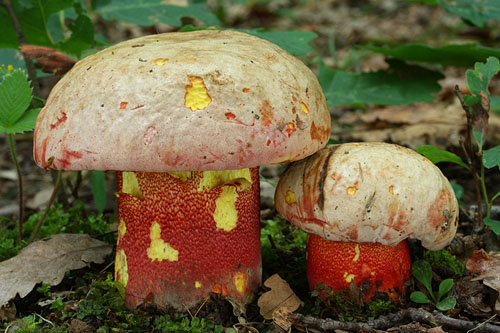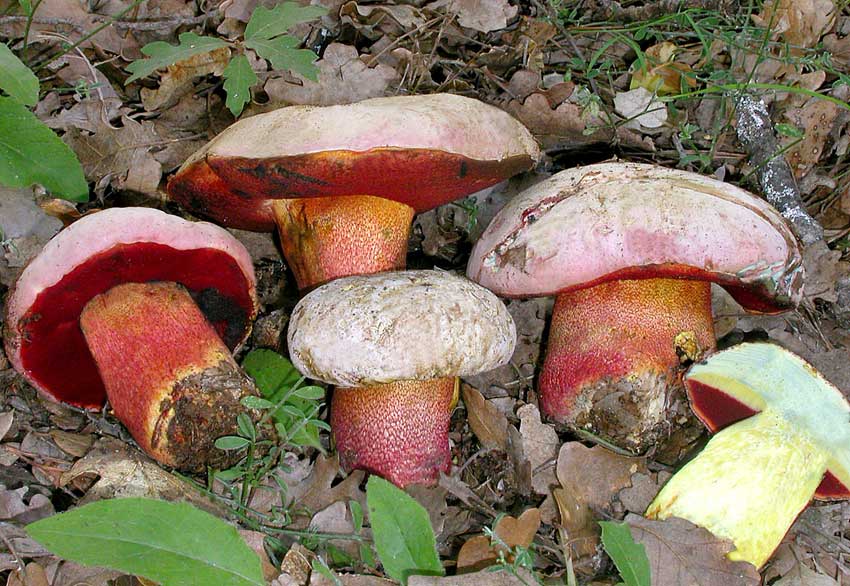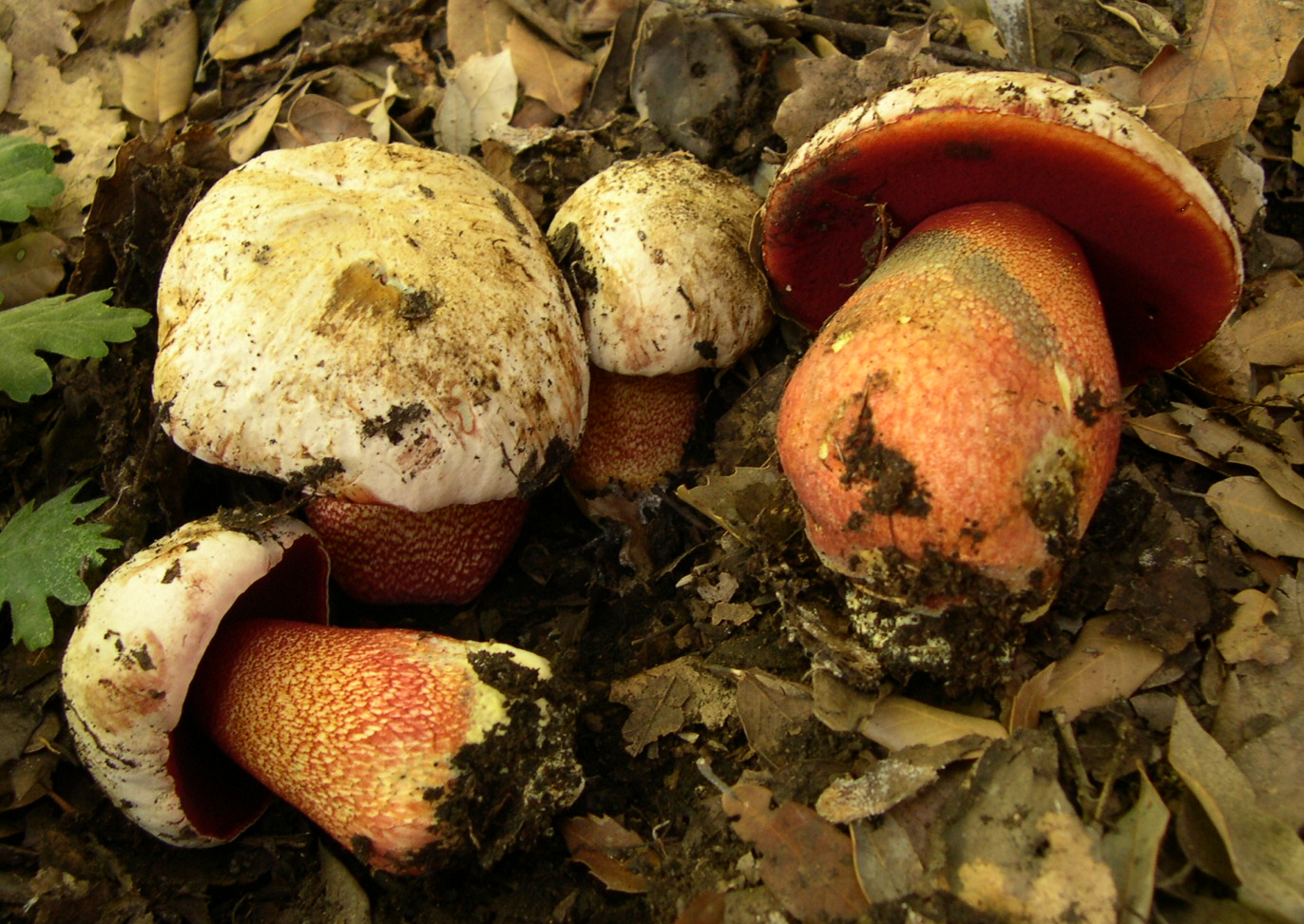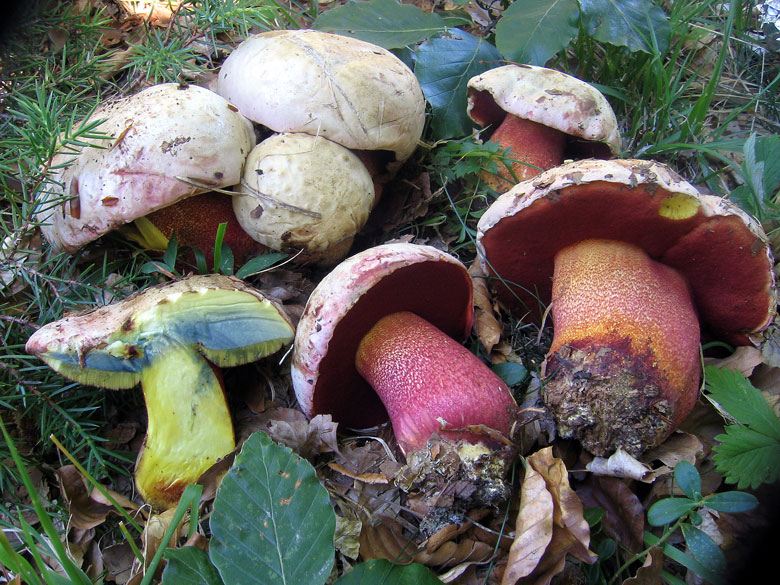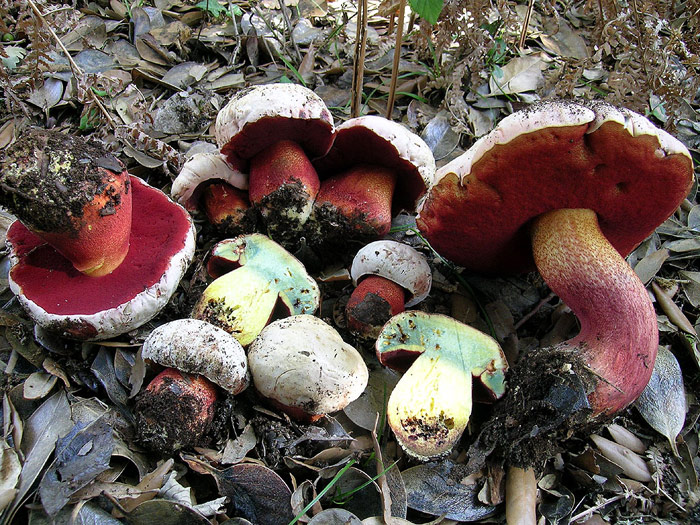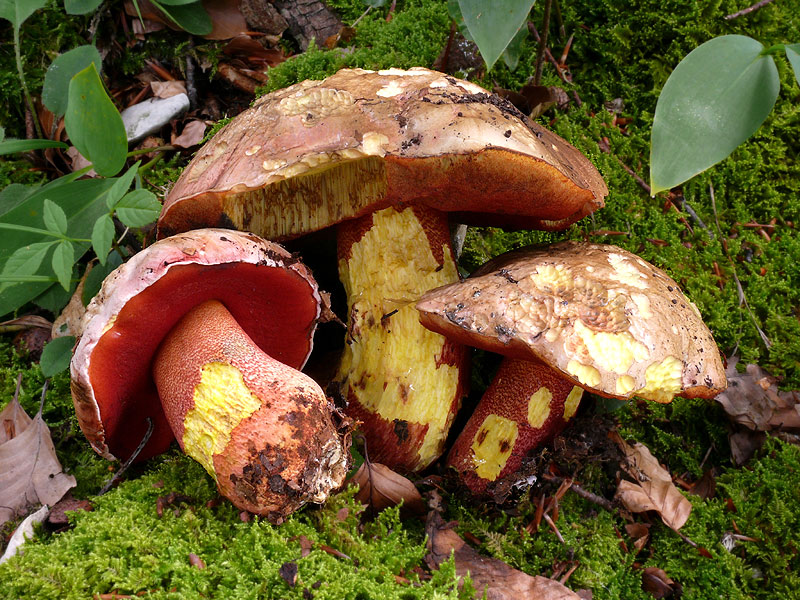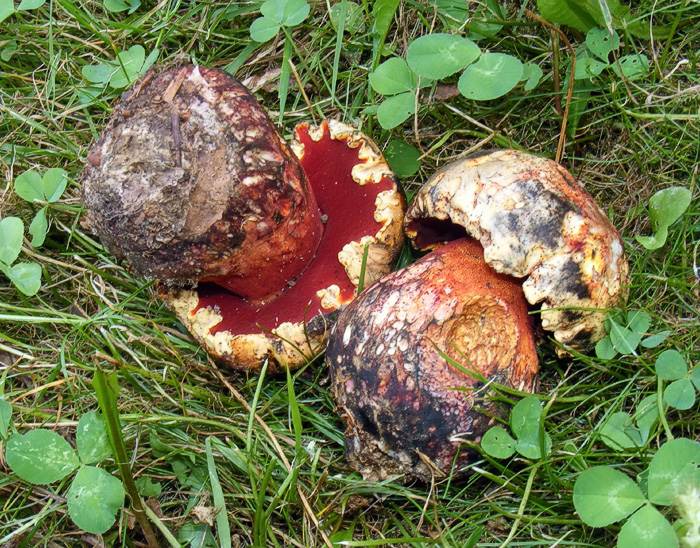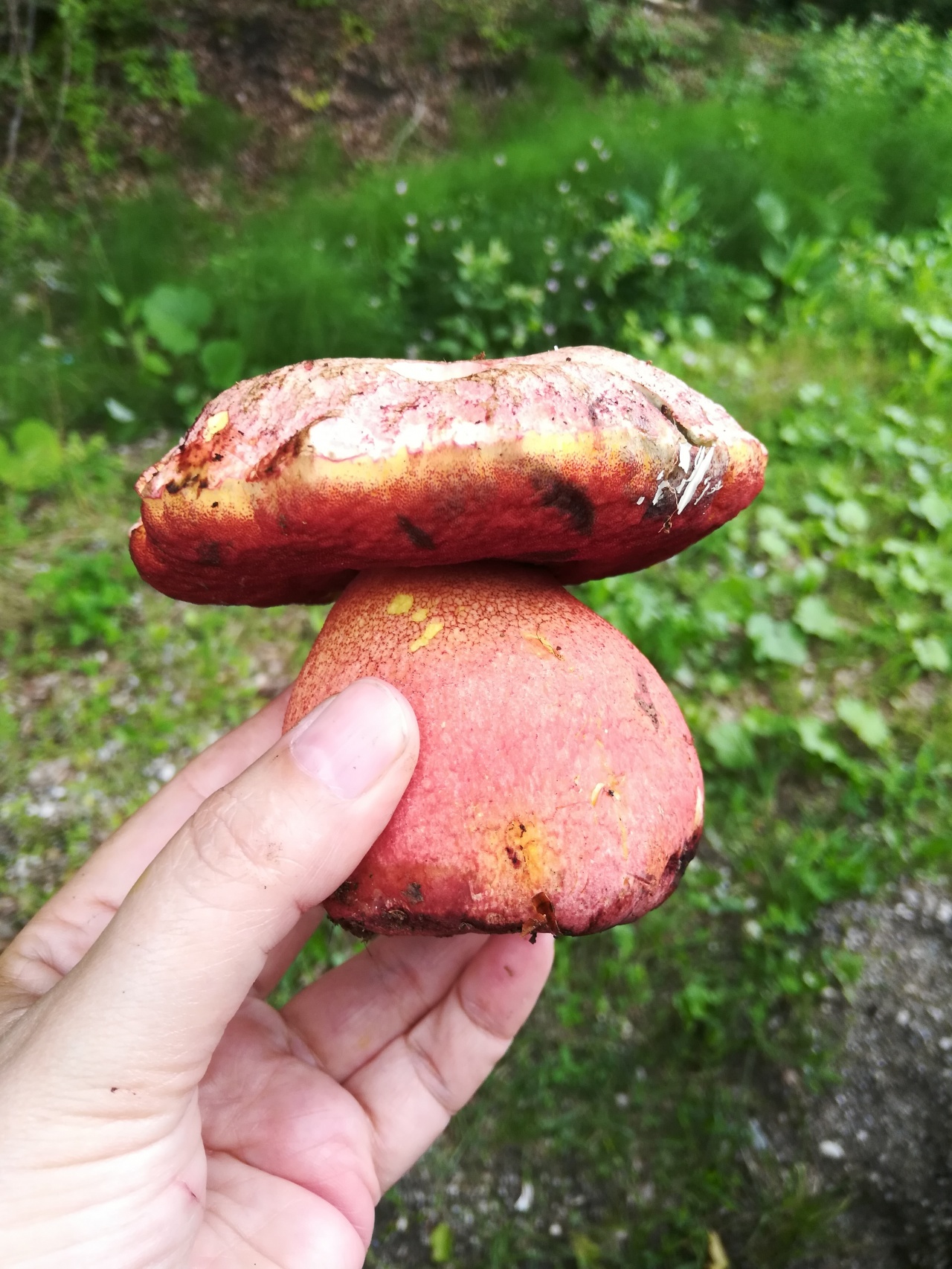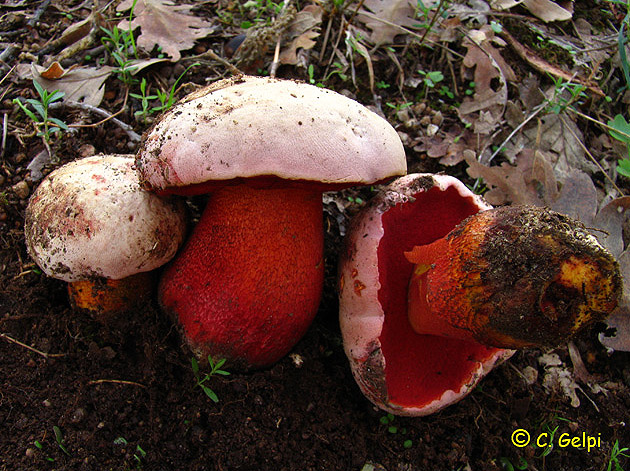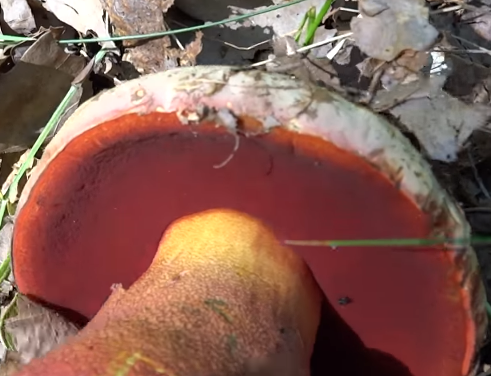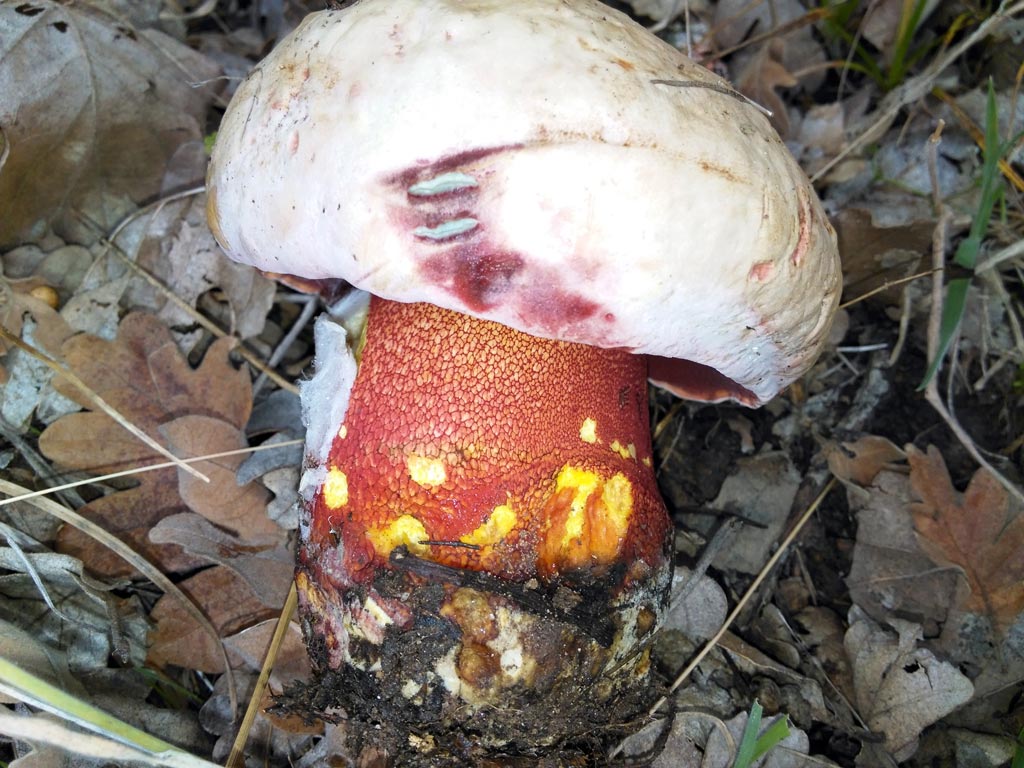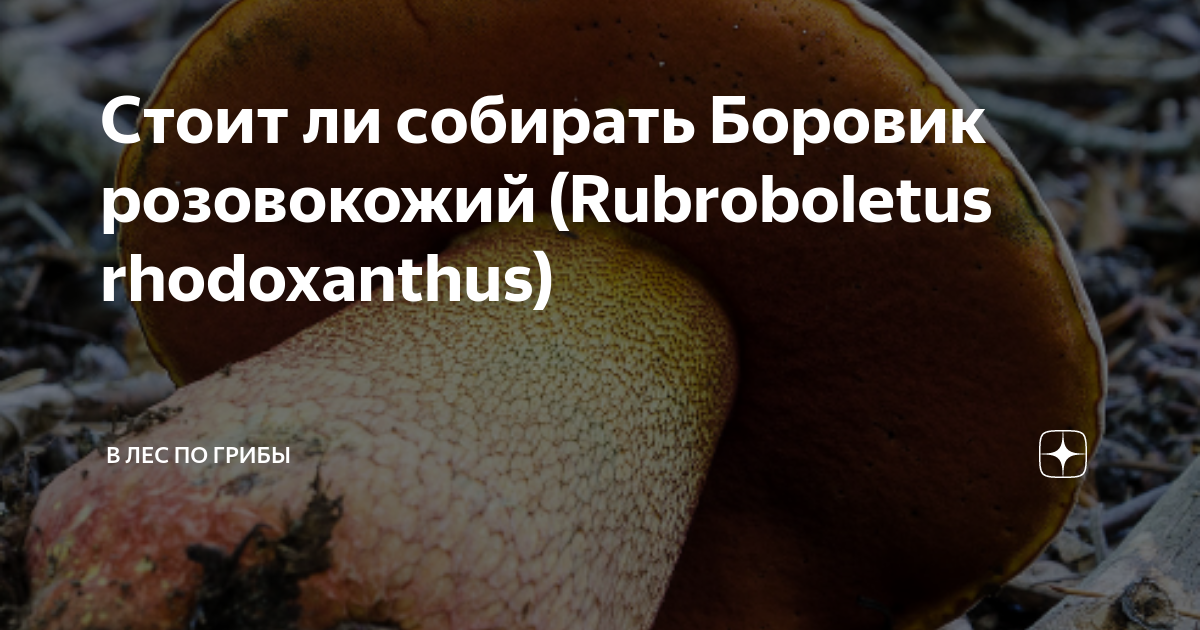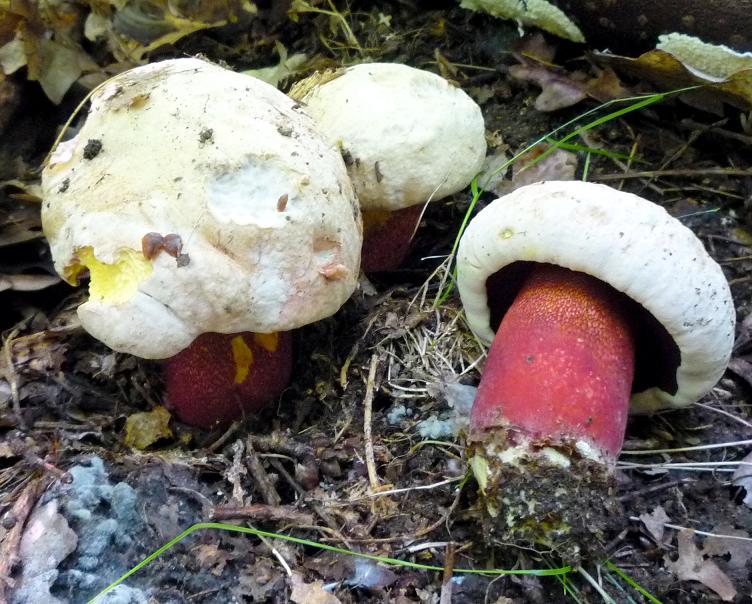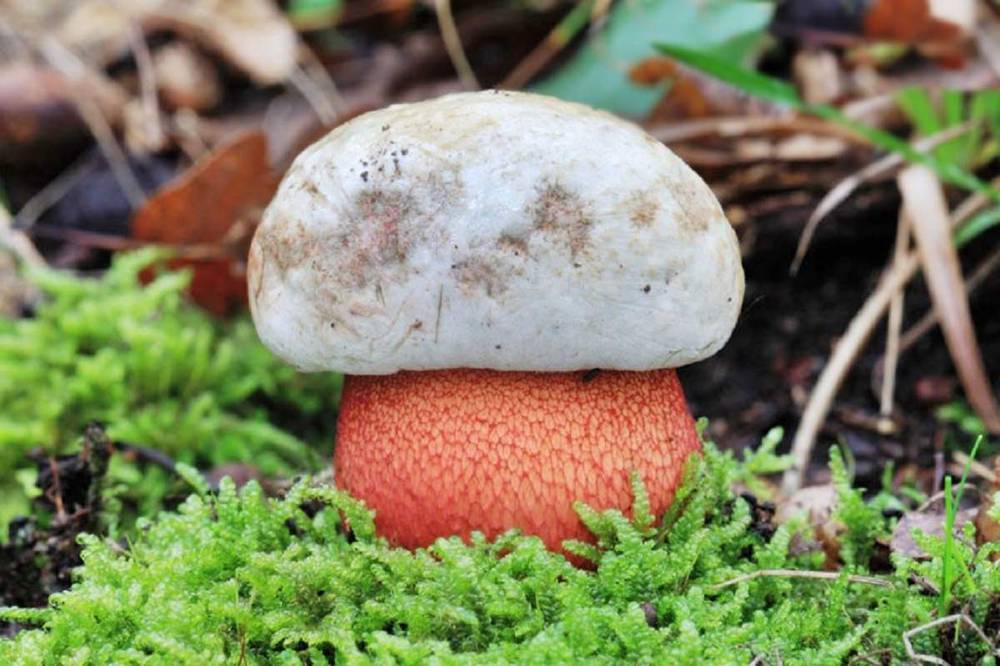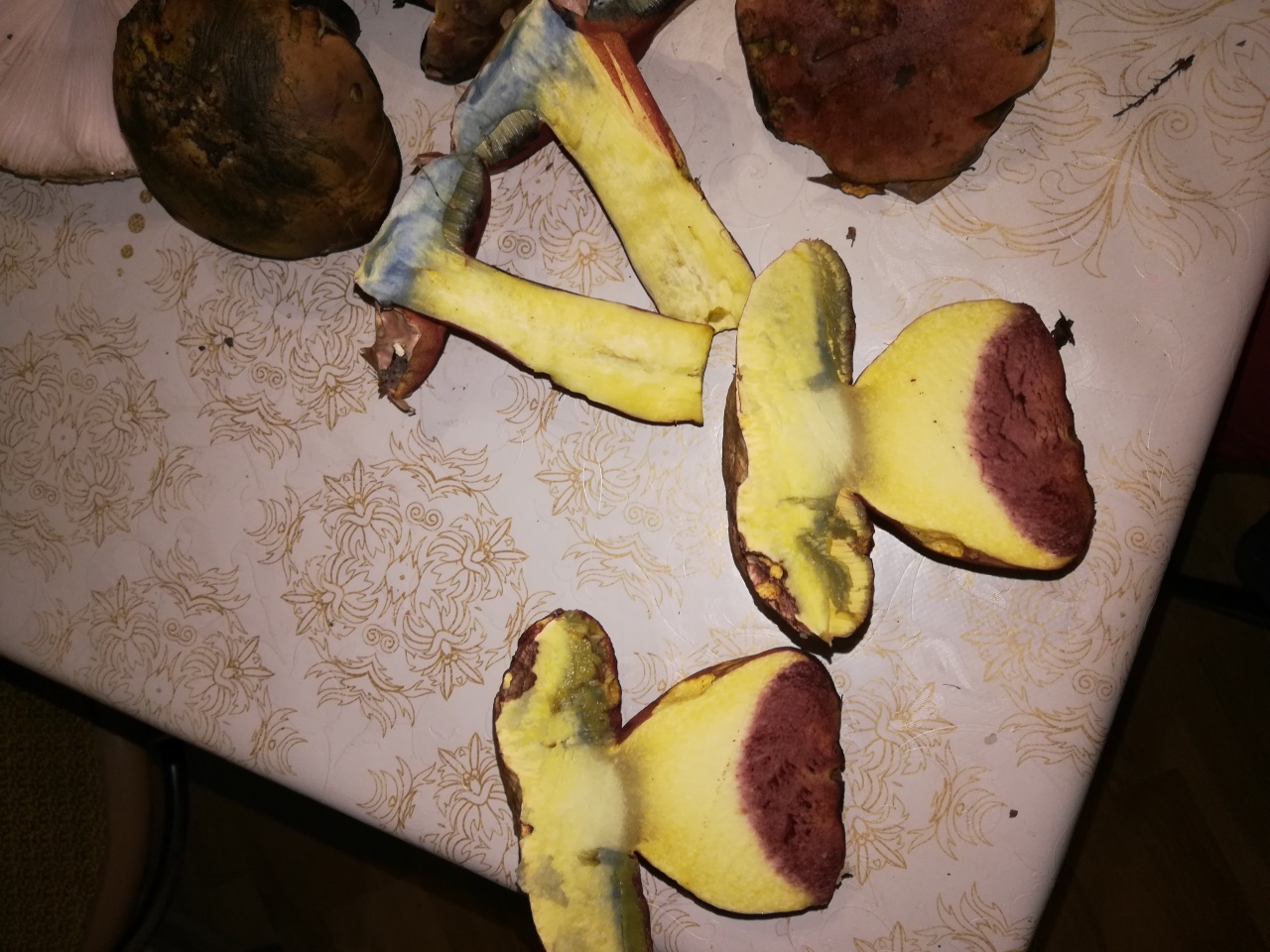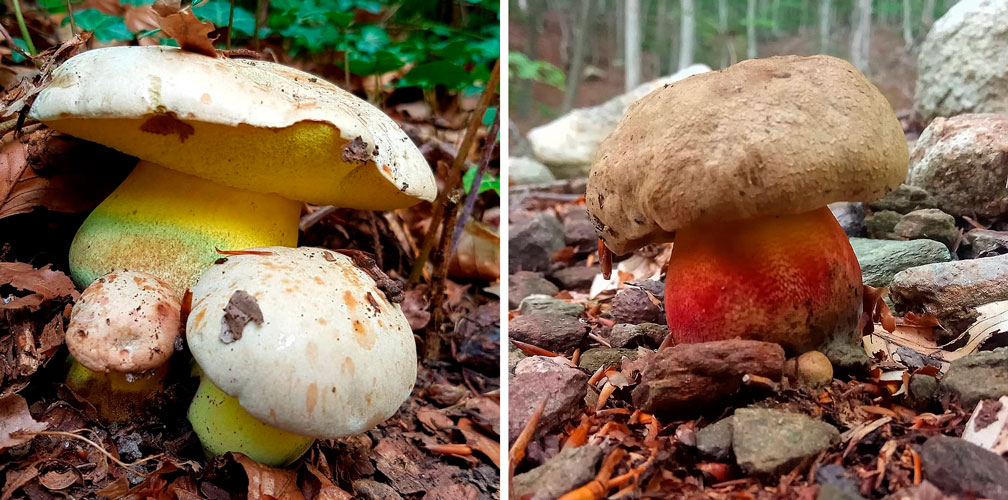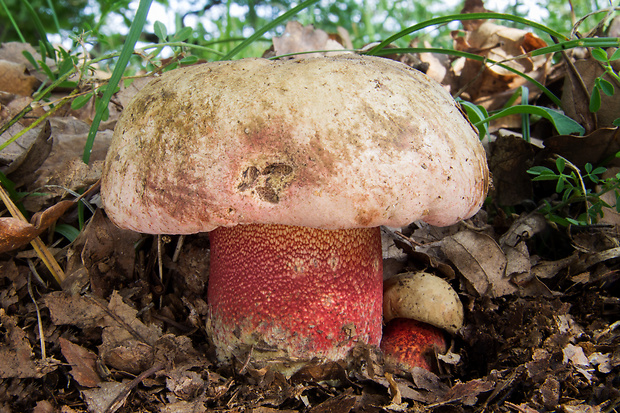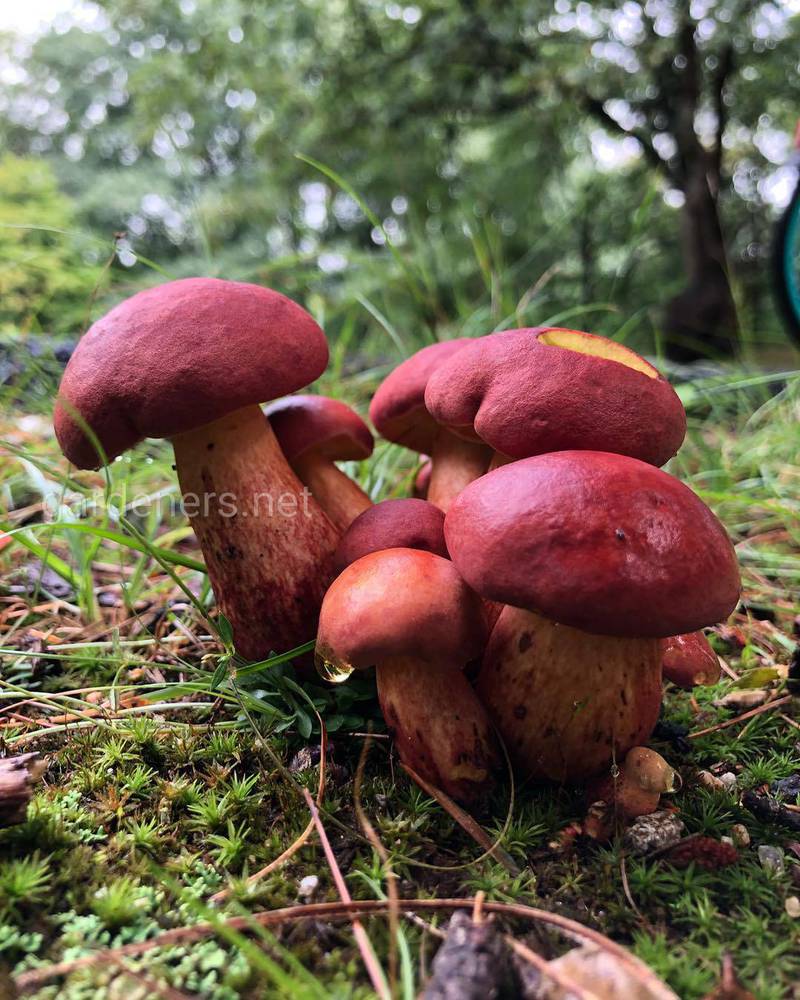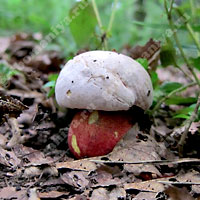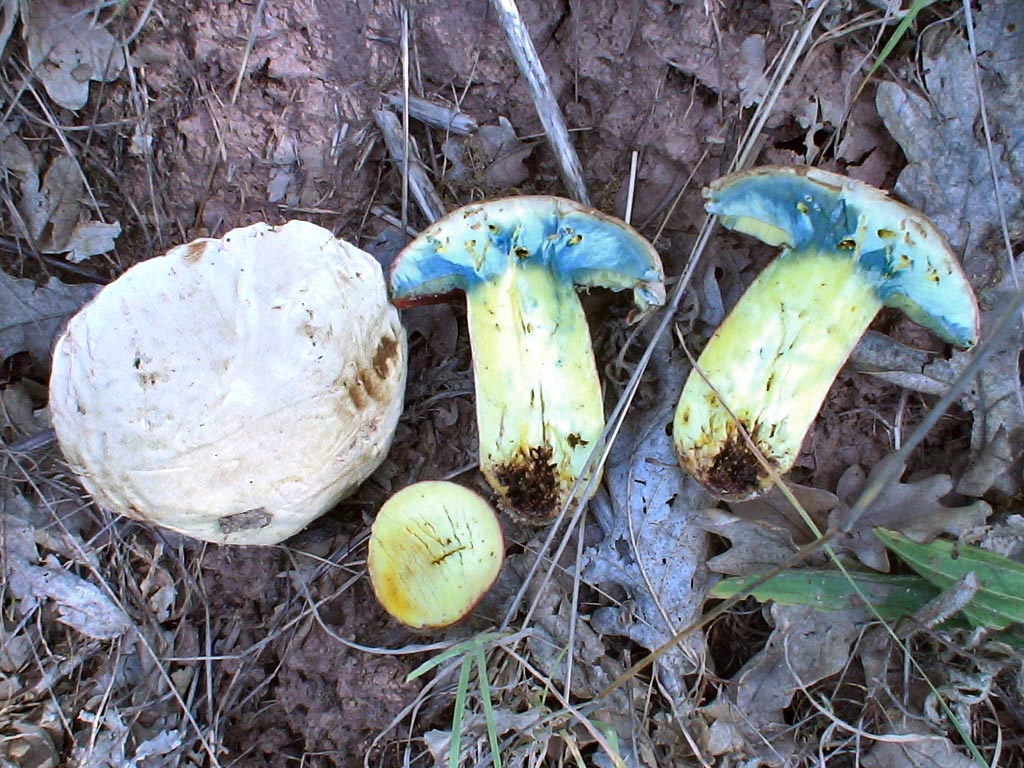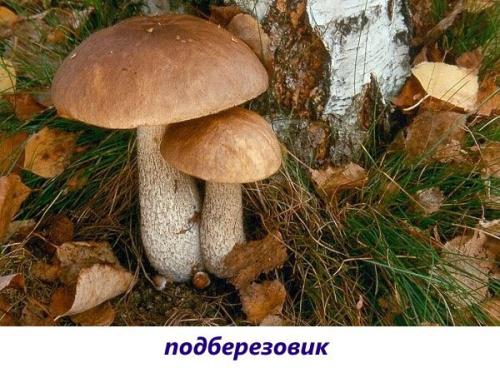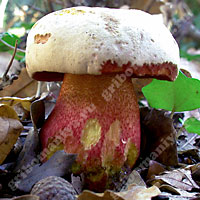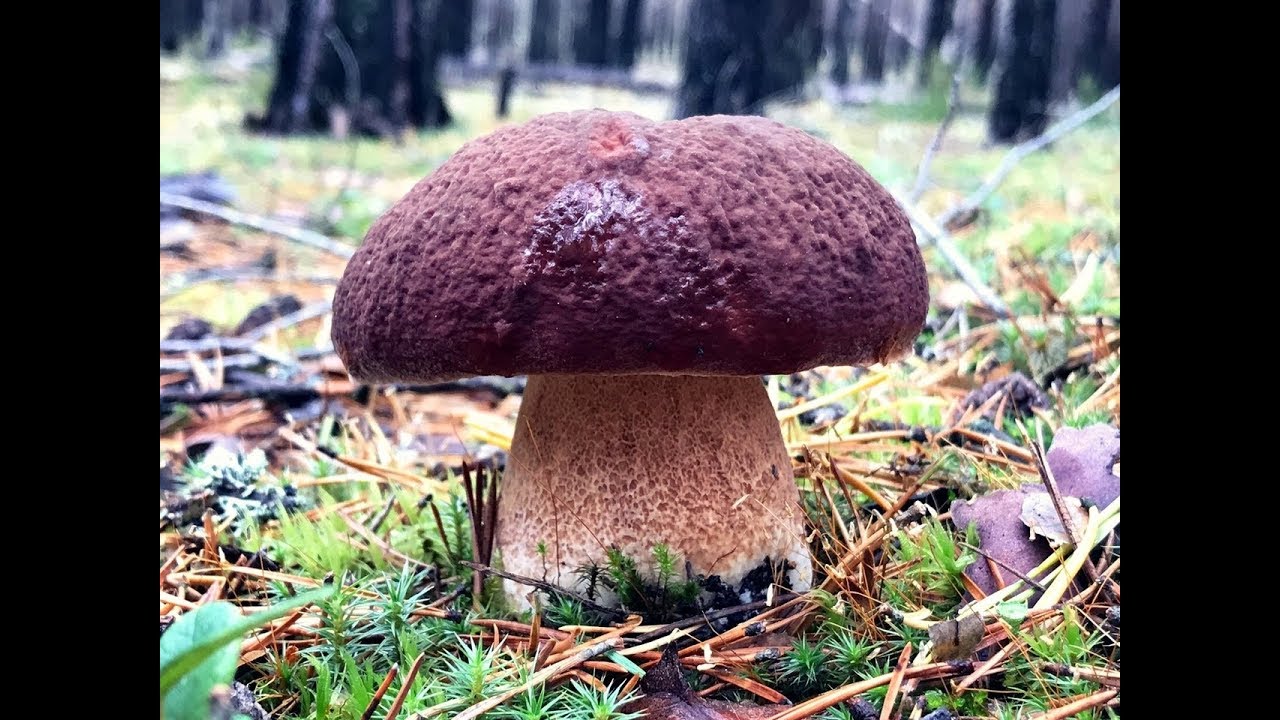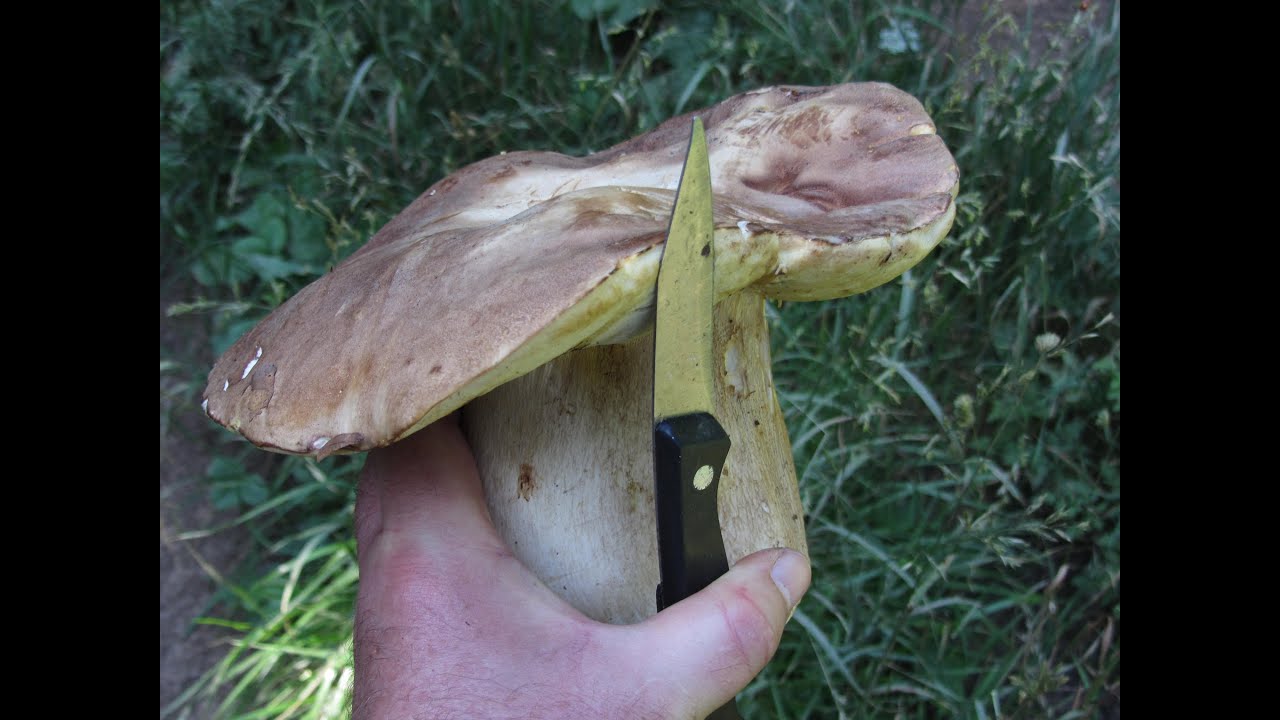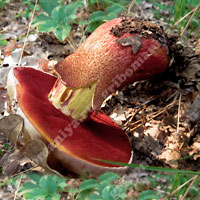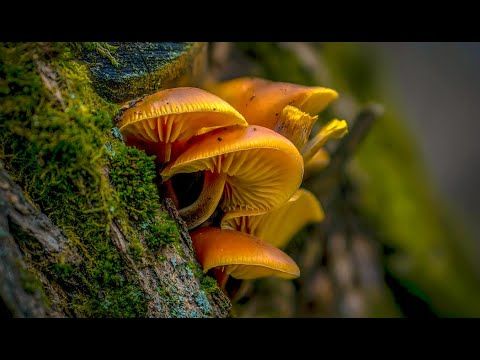Poisonous boletus pink-skinned
Despite the fact that this type of mushroom is quite rare, cases of poisoning have been recorded. These mushrooms are poisonous both raw and cooked.
A few hours after eating pink-skinned boletus, symptoms of poisoning appear. Most often, sharp pains occur in the abdomen, accompanied by diarrhea, vomiting and fever. With a large amount of mushrooms eaten, convulsions and loss of consciousness may occur.
Fatal outcomes in case of pink-skinned boletus poisoning are practically not observed. All symptoms of poisoning disappear in a few days. But sometimes complications can arise, especially children and the elderly. Therefore, at the first signs of mushroom poisoning, they immediately consult a doctor.
Similar species
The pink-skinned boletus is outwardly similar to the satanic mushroom, they even have the same growing places. However, this particular species is much less common.
Edible members of this genus
Two-colored boletus can be recognized by its pink-red color. The shape of the cap is initially convex, and then becomes wide-spread. The yellow pulp turns blue on the cut. Most of these mushrooms can be seen in North America during the summer months.
Burroughs boletus has a hat with a diameter of 7 to 25 centimeters. Depending on the age, the shape of the cap can be convex or flat; at a young age, the caps are more rounded. The color of the cap can be from any shade of white to gray and yellow-brown. The leg length ranges from 10 to 25 centimeters. These mushrooms are found mainly in the forests of North America. They form mycorrhiza with deciduous and coniferous trees. They grow in groups or in large clusters. In terms of taste, they belong to the 2nd category of edible mushrooms. They are suitable for preparing soups, side dishes, sauces and other dishes.
Boletus royal has a bright red-violet or pink-red cap; with age, the color often becomes paler. The size of the cap is 6-15 centimeters. In young specimens, the cap is convex, and in old ones it can become completely flat. The leg reaches 15 centimeters in length and up to 6 centimeters in width. The color of the leg is yellowish brown. Royal boletus is found mainly in beech forests. They grow in the Caucasus and the Far East. They prefer calcareous and sandy soils. They are collected from June to September. Royal boletus is a good edible mushroom with a dense, fragrant pulp that is highly prized. These mushrooms are cooked and canned.
| Boletus pink-skinned | ||||||||||||||||||||||||
| Scientific classification | ||||||||||||||||||||||||
|---|---|---|---|---|---|---|---|---|---|---|---|---|---|---|---|---|---|---|---|---|---|---|---|---|
intermediate ranks
|
||||||||||||||||||||||||
| International scientific name | ||||||||||||||||||||||||
|
Boletus rhodoxanthus(Krombh.) Kallenb., 1925 |
||||||||||||||||||||||||
|
Borovik pinkish (Latin Boletus rhodoxanthus) - mushroom of the genus Borovik (Boletus) families of boleths (Boletaceae). It is poorly studied due to its rare occurrence and therefore is considered inedible. Raw mushroom is poisonous.
Scientific synonyms:
- Boletus sanguineus var. rhodoxanthus Krombh., 1846basionym
- Boletus rhodopurpureus var. rhodoxanthus (Krombh.) Bon, 1985
Pink-skinned boletus (Latin Suillellus rhodoxanthus)
Name Boletus pink-skinned.Latin name: Suillellus rhodoxanthus.Other names: Boletus is pink-golden.Department: Basidiomycota.Class: Agaricomycetes.Order: Boletovye.Family: Boletovye.Genus: Suillellus.Poisonous mushroom.
 Name Boletus pink-skinned.Latin name: Suillellus rhodoxanthus.Other names: Boletus is pink-golden.Department: Basidiomycota.Class: Agaricomycetes.Order: Boletovye.Family: Boletovye.Genus: Suillellus.Poisonous mushroom.
Name Boletus pink-skinned.Latin name: Suillellus rhodoxanthus.Other names: Boletus is pink-golden.Department: Basidiomycota.Class: Agaricomycetes.Order: Boletovye.Family: Boletovye.Genus: Suillellus.Poisonous mushroom.
Scientific synonyms
Boletus sanguineus var. rhodoxanthus
Boletus rhodoxanthus
Boletus rhodopurpureus var. rhodoxanthus
Rubroboletus rhodoxanthus
Leg
45–120 mm high, 35–55 mm thick, at first ovoid, as the fungus grows it becomes clavate or cylindrical, not hollow, yellow with a bright red fine mesh pattern, turns blue when pressed.
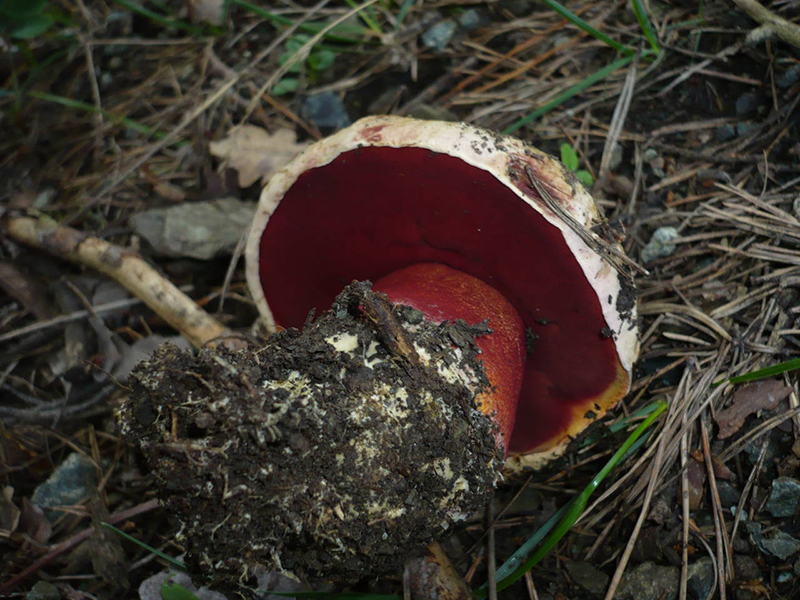
Hat
55-200 mm in diameter, in small mushrooms velvety, semicircular, dull, yellow-ocher, brown-yellow. As the fruiting body grows, the cap becomes cushion-shaped, smooth, dry, dark ocher in color. The skin has a pinkish tint, turns brown when pressed.
Hymenophore
Tubular, notched at the stem, 14–25 mm long, yellow in young mushrooms, then yellow-green blue when damaged. The pores are round, small, yellow, in adult mushrooms they acquire a carmine-red or purple color, turn blue when pressed.
Dense, yellow, turns blue on the cut, without a pronounced taste and smell.

Habitat
Grows on soil, singly, in deciduous, mainly oak forests. Prefers calcareous, saturated soils. It is quite rare.
Similarity
Pink-skinned boletus has similarities with mushrooms of the genus Rubroboletus, differs from them in color and intensity of blue discoloration.
|
December |
January |
February |
|
March |
April |
May |
|
June |
July |
August |
|
September |
October |
November |
The nutritional value
The mushroom is poisonous and has no gastronomic value. Contains the poison muscarine, although the concentrations are not so high, nevertheless, cases of poisoning with this mushroom are known, it manifests itself as an acute disorder of the digestive tract.
Description of pink-skinned boletus
The diameter of the pink-skinned boletus cap is 7-20 centimeters. At first, the shape of the cap is hemispherical, and over time it opens up to the end and becomes like a pillow, after it is slightly pressed in the middle, and takes on a prostrate shape.

The skin of the cap is smooth, but sometimes it is a little velvety, and sometimes it is sticky. The color of the cap is brown-gray, or it can be dirty yellow, while there is a slight bloom of red along the edges.
The flesh of the pink-skinned boletus is quite dense, the leg is often much softer. The area near the tubes is also bright yellow. The taste and color of the pulp are mild.
This boletus can be up to 20 centimeters in height and up to 6 centimeters in diameter. At first, the stem is tuberous, but over time it becomes cylindrical, and the base is often pointed. The color of the leg is lemon yellow, bright, and closer to the base it becomes wine red. The leg is completely covered with a convex bright red mesh, which at first has a looped structure, and as it grows, it stretches and becomes dotted.

The tubular layer is usually light yellow or bright yellow, and in adulthood, the tubules may turn yellow-green or blue. The tubules are rather long, the pores are at first narrow and the same color as the tubules, but over time they become a rounded blood-red color.
Ecology and distribution of pink-skinned boletus
These mushrooms grow in light-colored deciduous forests. They form mycorrhiza with beech, oak, edible chestnut, hornbeam, hazel and linden. Give preference to calcareous soils.
Pink-skinned boletus are common in southern Europe, and also grow in the Caucasus and the Middle East. They bear fruit from June to September.
Boletus pink-skinned: description, places of growth, related species

Pink-skinned boletus, he is pink-golden boletus, he is pink-skinned, is a poisonous mushroom of the Boletov family. These mushrooms have been studied very little, since they are rarely found. They are not harvested or cultivated.
The Latin name for the mushroom is Boletus rhodoxanthus.
Description of pink-skinned boletus
The diameter of the pink-skinned boletus cap is 7-20 centimeters.At first, the shape of the cap is hemispherical, and over time it opens up to the end and becomes like a pillow, after it is slightly pressed in the middle, and takes on a prostrate shape.
The skin of the cap is smooth, but sometimes it is a little velvety, and sometimes it is sticky. The color of the cap is brown-gray, or it can be dirty yellow, while there is a slight bloom of red along the edges.
The flesh of the pink-skinned boletus is quite dense, the leg is often much softer. The area near the tubes is also bright yellow. The taste and color of the pulp are mild.
This boletus can be up to 20 centimeters in height and up to 6 centimeters in diameter. At first, the stem is tuberous, but over time it becomes cylindrical, and the base is often pointed.
The color of the leg is lemon yellow, bright, and closer to the base it becomes wine red.
The tubular layer is usually light yellow or bright yellow, and in adulthood, the tubules may turn yellow-green or blue. The tubules are rather long, the pores are at first narrow and the same color as the tubules, but over time they become a rounded blood-red color.
Ecology and distribution of pink-skinned boletus
These mushrooms grow in light-colored deciduous forests. They form mycorrhiza with beech, oak, edible chestnut, hornbeam, hazel and linden. Give preference to calcareous soils.
Pink-skinned boletus are common in southern Europe, and also grow in the Caucasus and the Middle East. They bear fruit from June to September.
Poisonous boletus pink-skinned
Despite the fact that this type of mushroom is quite rare, cases of poisoning have been recorded. These mushrooms are poisonous both raw and cooked.
A few hours after eating pink-skinned boletus, symptoms of poisoning appear. Most often, sharp pains occur in the abdomen, accompanied by diarrhea, vomiting and fever. With a large amount of mushrooms eaten, convulsions and loss of consciousness may occur.
Fatal outcomes in case of pink-skinned boletus poisoning are practically not observed. All symptoms of poisoning disappear in a few days. But sometimes complications can arise, especially children and the elderly. Therefore, at the first signs of mushroom poisoning, they immediately consult a doctor.
Similar species
The pink-skinned boletus is outwardly similar to the satanic mushroom, they even have the same growing places. However, this particular species is much less common.
Edible members of this genus
Two-colored boletus can be recognized by its pink-red color. The shape of the cap is initially convex, and then becomes wide-spread. The yellow pulp turns blue on the cut. Most of these mushrooms can be seen in North America during the summer months.
Burroughs boletus has a hat with a diameter of 7 to 25 centimeters. Depending on the age, the shape of the cap can be convex or flat; at a young age, the caps are more rounded. The color of the cap can be from any shade of white to gray and yellow-brown. The leg length ranges from 10 to 25 centimeters.
These mushrooms are found mainly in the forests of North America. They form mycorrhiza with deciduous and coniferous trees. They grow in groups or in large clusters. In terms of taste, they belong to the 2nd category of edible mushrooms.
They are suitable for preparing soups, side dishes, sauces and other dishes.
Boletus royal has a bright red-violet or pink-red cap; with age, the color often becomes paler. The size of the cap is 6-15 centimeters. In young specimens, the cap is convex, and in old ones it can become completely flat. The leg reaches 15 centimeters in length and up to 6 centimeters in width.
The color of the leg is yellowish brown. Royal boletus is found mainly in beech forests. They grow in the Caucasus and the Far East. They prefer calcareous and sandy soils. They are collected from June to September. Royal boletus is a good edible mushroom with a dense, fragrant pulp that is highly prized.
These mushrooms are cooked and canned.
All species of the genus Bolet:
| Boletus oak (Boletus reticulatus) | Dark brown flywheel (Boletus ferrugineus) | White mushroom (Boletus edulis) |
| Pine mushroom (Boletus pinophilus) | Bronze boletus (Boletus aereus) | Boletus bicolor (Boletus bicolor) |
| Green flywheel (Boletus subtomentosus) |
If you are in doubt about the edibility of the mushrooms you find, do not take them. The site administration does not bear any responsibility for the actions of people taken on the basis of the information received on the site. Some types of poisonous mushrooms cannot be identified without special equipment and can be confused with edible ones.



